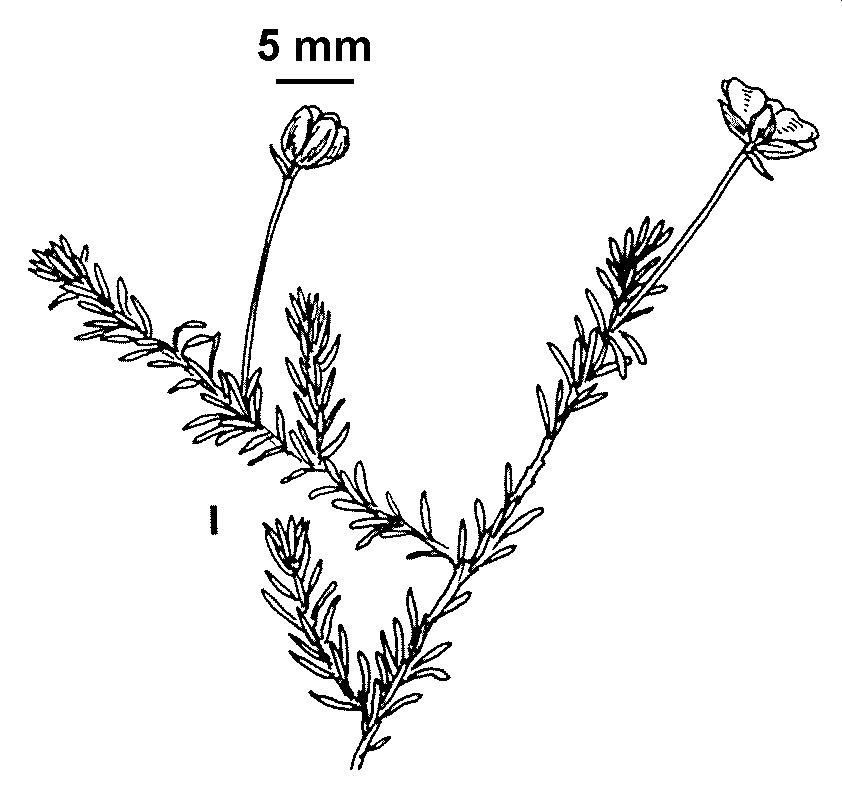Hibbertia exposita
ToelkenProstrate, mat-forming shrubs; branches pubescent to glabrous. Vestiture of tubercle-based simple or forked hairs, hairs rarely persisting. Leaves narrowly oblong to linear, (1.4–)2.5–3.5(–4.4) mm long, 0.6–0.8(–1) mm wide, sparsely pubescent with hairs often restricted to margins, or glabrous apart from remaining tubercles; petiole 0.2–0.4 mm long; apex obtuse with a small tuft of hairs on the projecting central ridge; margins revolute, usually flush with and against the central ridge. Flowers on peduncles (5.6–)8–15(–18.5) mm long, terminal, with 1–3 linear-triangular bracts 1.1–1.4 mm long; sepals 3.3–4.5 mm long, unequal, glabrescent to glabrous; petals broadly obovate, 5–7.5 mm long, yellow; stamens 10–14, filaments free but often dilated basally; carpels 3, tomentose. Flowers Nov.–Jan.
VAlp. Restricted to subalpine woodland on Mt Wellington and the adjoining Moroka Range, growing in exposed sites on shallow rocky soil.
Easily confused with Hibbertia ericifolia, which is distinguished from H. exposita by its generally larger, sessile to subsessile (peduncle to 5 mm long) flowers.
 Spinning
Spinning
